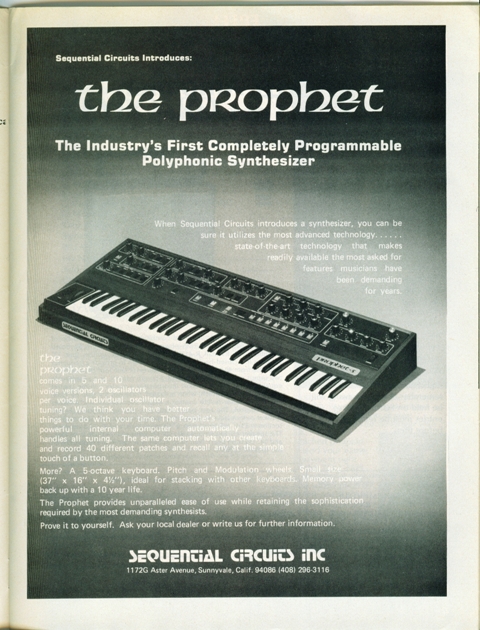Theo Verelst Local Diary Page 30
The same holds as for my tripod and
other diary pages: nothing on this page may be copied or changed and
distributed except that the page as a whole may be printed or otherwise
transferred in unchanged form, mentioning the original URL
and global page reference, and that holds for everyone on the globe
and beyond, including so called 'christians' and self-appointed 'Secret
Services'.
Mon 23 22:07 2006
Time for another page? Who'll say, I just got my paper rejected for the
Audio Engineering Society, but then again, I received a 5 (6 is the
least needed to pass) after 3 (!) trials for my university course
Digital Signal Processing, and my synth is all digital processing, and
works and sounds great.... Anyhow maybe not a good time to write, but
then again, the machine I wrote about, and its software work fine, I at
the time have become official electrical engineer anyhow, didn't need
the crappy course ever (I at least was even officially electronician,
too, which I consider more honorable), and I have another paper which
is in review process, for probably the greatest (annual) computer
graphics conference SIGGRAPH.
Different subject, I made some things in
two weeks or so, which was good to do, I'm still looking at what
application to make exactly, but some hefty computations were possible.
My old car!
There are songs like 'my old piano' (D. Ross), people who like old
fashioned cars, or want not the degeneration or de-quality-fication of
things, but I liked my old car, think it is still fairly up to date and
of superior quality in various ways and looks more decent and
attractive in a modern way than anything else on the road, almost,
maybe with the exception of extremes.
And what was the car I had from lets say 91 to 97 or so (I forgot)
until It All Went Wrong, or in other words when I was unduely kicked
out of my job environment without the promised ticked out of here or
appropriate credits and ran out of money trying to figure out what
terrorist holland was all trying to pull off. Well, an audi of course,
the sort of kind which was well known to win ralleys, have 5 cylinders
(probably one of the few, for instance for balancing reasons), that
would drive comfortable and sportslike, and cleave to the road better
than is good for a slip-course (which I did and where I tried the
car on the slipping track, and found its pretty hard to make it loose
control, waaaaay out of the league of all the other people and their
normal cars.
So this was sort of the car I drove for at least 160,000 km, a Audi 100
2.0 5 cyl injection / liquid gas, black, resembling this model
(randomly taken from an add on the itnernet):
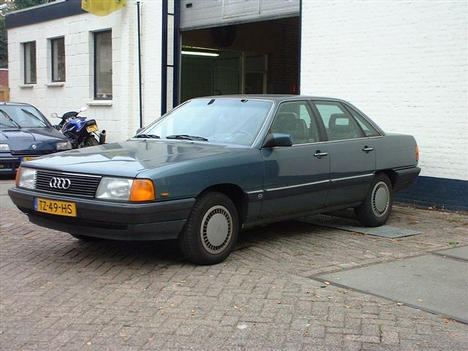
I when I first bought it (I think it was 6 years old) had to revise the
engine, the cylinder head to be precise, which I had had bored, fitted
with a number of new inlet and all new outlet valves, and fitted back
myself with all proper precautions, and which lasted the same number of
kilometers it had lasted in the first place again when the tax
collectors repossesed it, at which point I compression was still fine
and equal per cylinder.
I also replaced brakes, including disks, which made me feel pretty safe
driving and braking unslow on the german autobahn for instance, and to
begin with I had the selling garage change some rubbers which was
needed according to the dutch automobile association (ANWB) purchase
test I had done before I spent the appr. 5000 dollars for it at the
time, which I had easily paid of in 2 years.
Quite expensive in tax, because of the liquid gas installation, but I
drove not a little, so that paid itself back, and in such a way....
Great.
More Graphics
Like the above, but newer: a open
scene graph graphics implementation
of a 3 D audi!
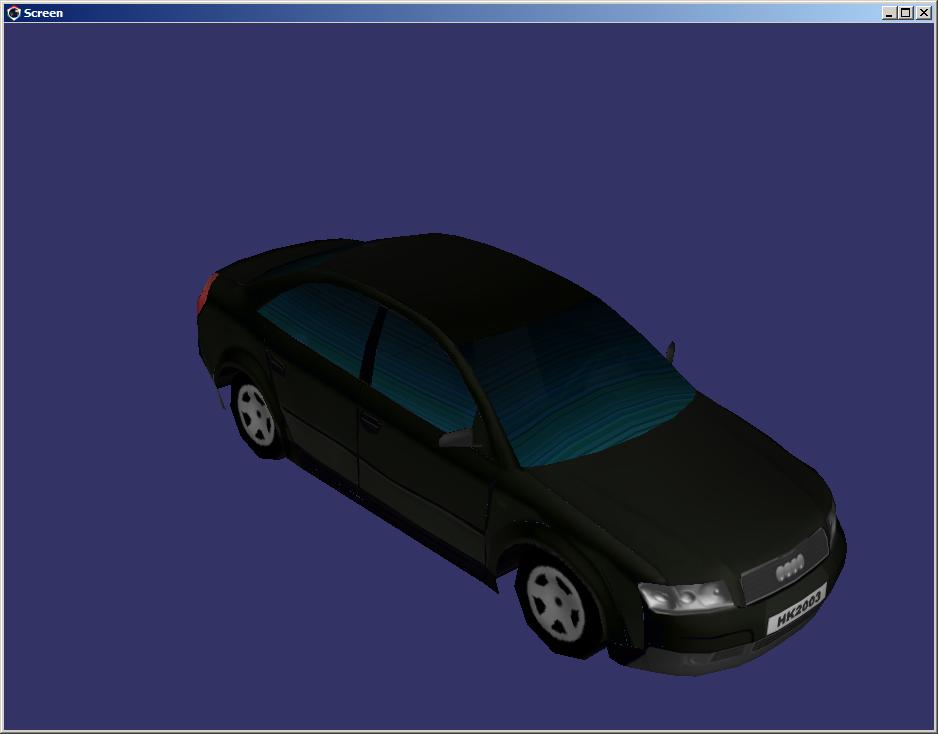
For reasons of eastetics, though the environment is served by low
CW-value (streamlined) natural gas, and high quality motor cars, this
OSG demo application is a good recommendation for fast graphics demo,
some fly bys give the impression a real forrest is flashing by:
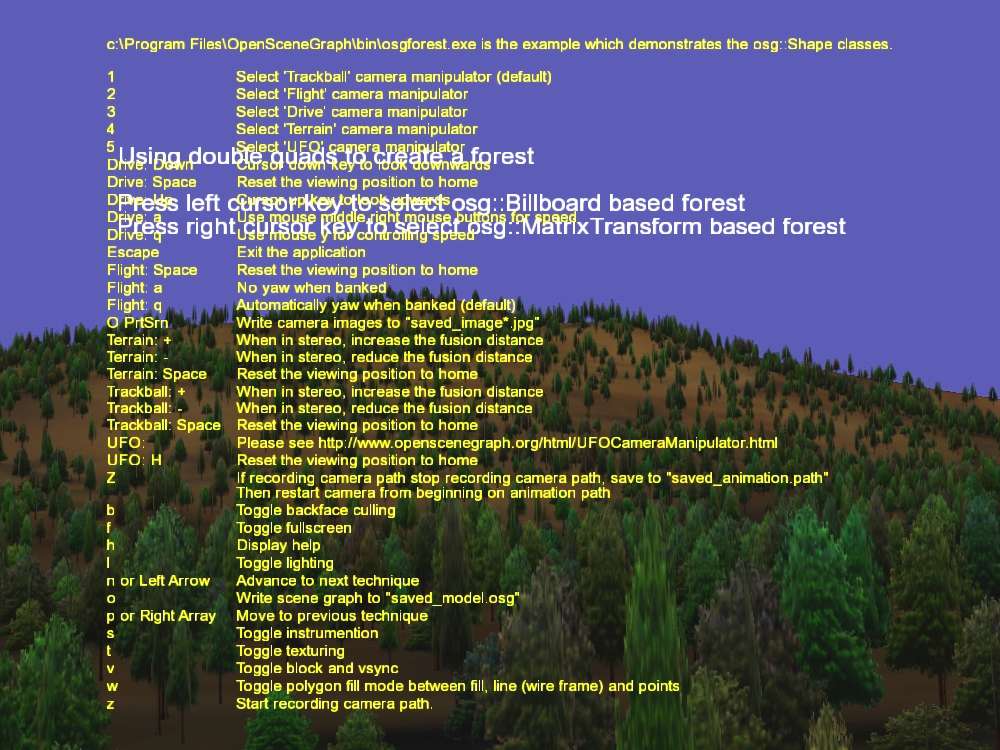
Some other 3D models with fast graphics effects, such as glass, run on
a fast machine, see below, taken form the OSG demo programs, which are
maybe not dramatic, but good graphics.
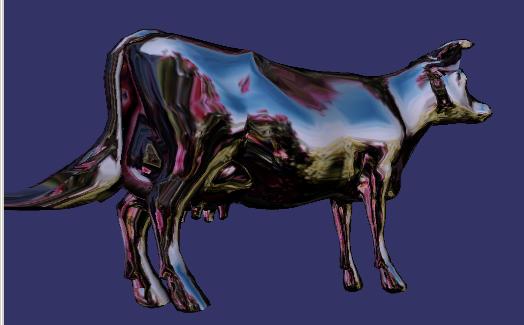
All models can be translated and rotated in real time, which in this
case makes the reflection change dymamically, which is cool. I have no
artisitic inention with the choice of models, I picked some pretty or
interesting ones withtout regard for the meaning.
This watch has the looking glass change mistyness when the viewing
angle changes:
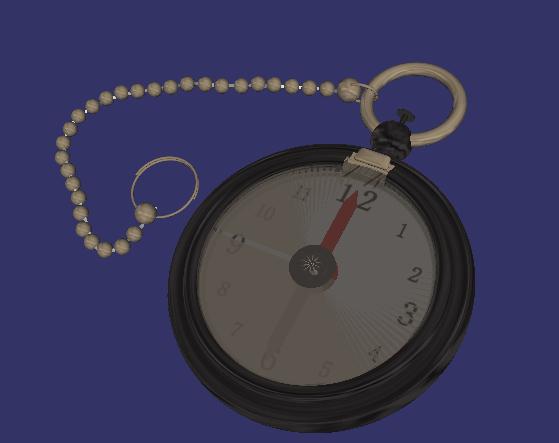
This externally found drumset looks great I think, maybe I'll use it as
interface for and audio program!
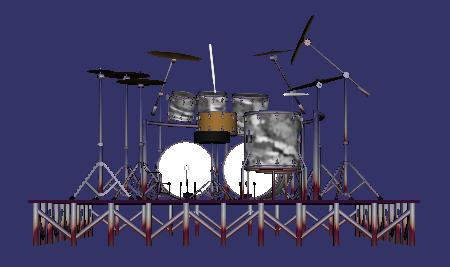
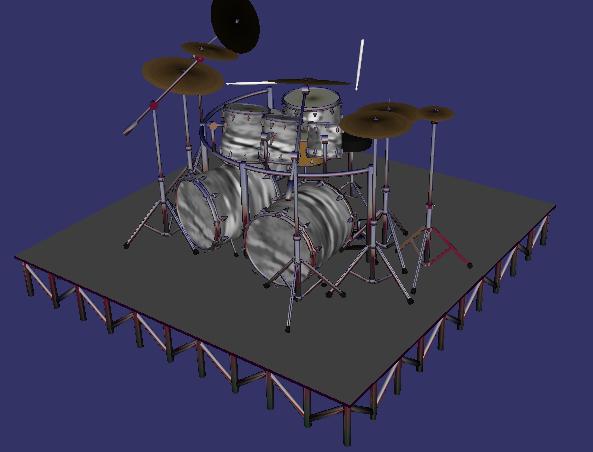
The Moon, Mars, and Beyond
Some of the space (I think Hubble space telescope) images are stunning,
like a sort of abstract artist has been at work
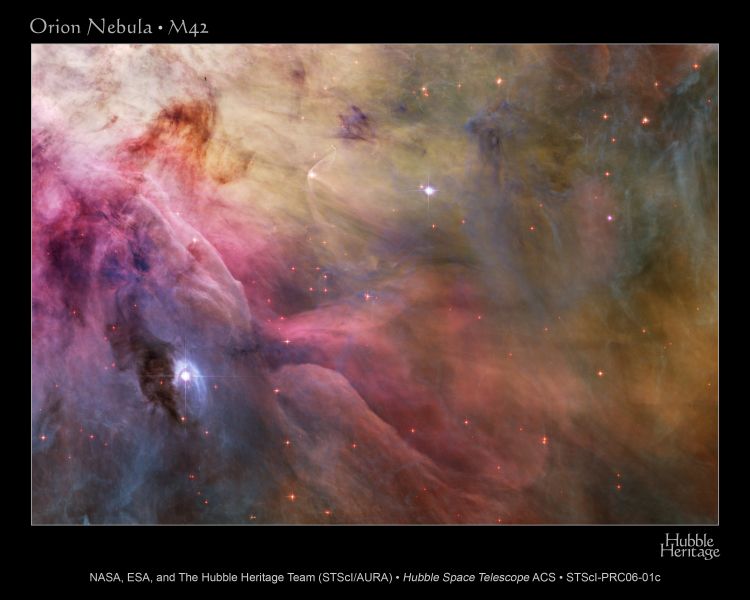
Not "pigs in space" but "God in Space" ?! This image and the following
can be clicked to see a large version
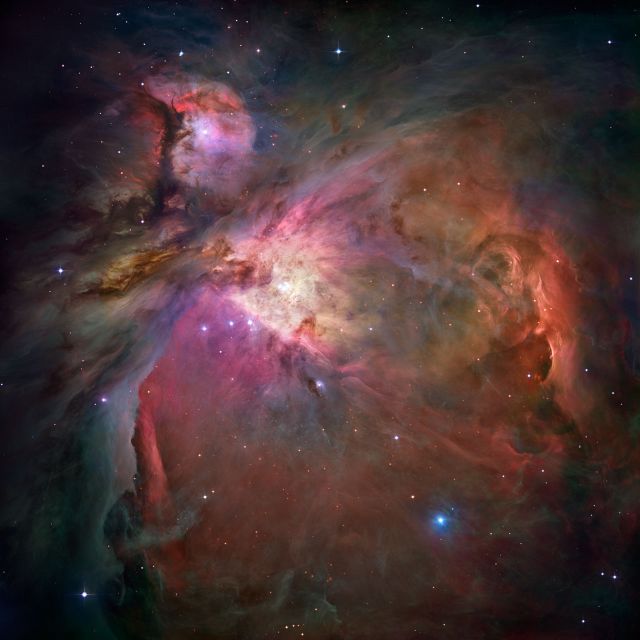
I'm not sure about the colour sources for these images, sometimes
spectral lines are filtered for various elements like hydrogen, oxigen,
etc, which I found are very far from visible light, so that the colours
then have nothing to do with what one would see normally.
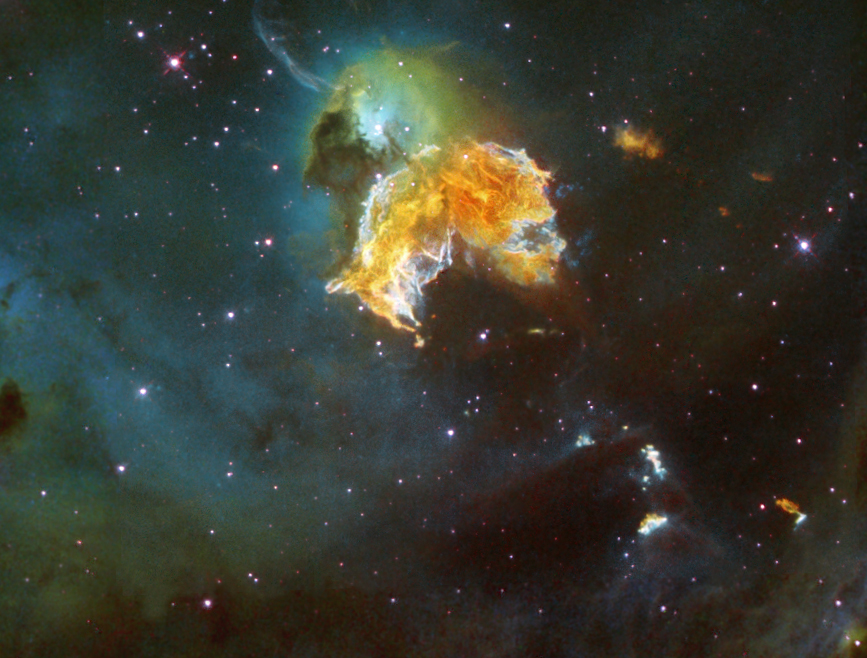
Stunning pictures.
The Rejected AES paper
How much rejection is still acceptable? I don't know, I think its a
good subject, and interesting, and I've written (published) relevant
work before, that's not new, so basically I think it's wrong to not let
an audience take notice of it and me some credit, I'd presume.
See the previous
diary page for the (short) paper setup. Click here to get the pdf of the whole partial
paper I sent in.
My own publisher: Fedora Core 4 / 64 on Athlon 64 and 768kilobit/sec
upload ...
Send me money! Or relevant American
job offers! Or fanmail! Gig offers with Mike Stern and Dennis Chamber,
or maybe the YellowJackets! Or a ticket to the moon! Will this help?
The Shadow of Your Smile
Barbara (Streisand) sung it, various pianists in jazz and other people
in country sung it, I found it in the realbook I had:
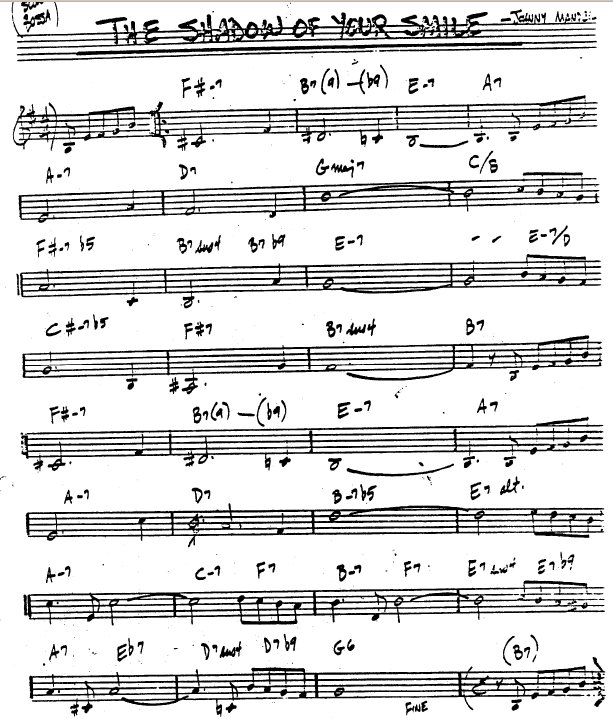
It's great to have good music around, and its always good to go on good
(though on slow this would work, too) internet to get an idea of music
from amazon samples, or of course from complete and well made MIDI
files, like this one,
which gives an impression of the song.
Excellent chords, like I was aiming for to learn more about, or rather
confirm my knowledge and maybe learn the classical names of when I in
90 or so started doing a course in musical harmony. At the university
music centre that was significant level, and I learned some names, and
that I only intuitively knew the difference in melody and song lines
and the possible (complicated) harmonistations for the various 7th
chords, the in-major scale 7, the dimishied ("normal", dominant)
7, and the double diminished 7, applicable for instance in a dimished
chord (c, e flat, g flat, a).
Of course the jazz combo at the time I played in was quite more into
hipper and more recent harmonics in jazz/fusion, but still it never
hurt to have a good course.
Who's that song title about now? I really can't tell. Wish I
could.
I've just made an mpeg sound file,
about 3.5 megabyte size,
192kbits/sec (which this server can easily upload in realtime), made
with Timidity, a Open Source Midi file player of decent quality, really
quite a bit better then the normal windows midi players, so it sounds
good enough to listen too, even though I use simpy the internet midi
file.
In fact I tried a command combination to do the midi-to-mpeg rendering
automatically, which is still quite a bit computation intensive on the
64 bit system, I guess it renders the file about 5x real time, but
timidity isn't altogether pityfull about rendering samples, it takes
its processing power to do that not too lame:
timidity theshadowofyoursmile.mid -Ow -o - | lame -q 2 -b 192 - shadowofyoursmile.mpg
Try timidity yourself, using wav files or direct output to even a
moderate sound card, it's worth listening to the quality, like
people with keyboards and midi files would probably appreciate.
High Definition TV
When working at university, or maybe already as a graduate student, in
the EE scene the subject of High Definition Television was raised, and
early implementations prototyped.
As it is, apart from DVD's the BBC is broadcasting a sort-of HD format
on its satellite, which can be received over large parts of europe
(holland and france at least). I thought that they had made their
channels pay-tv, because an older, very cheap portable sat receiver
didn't decode most of them anymore, but now it appears that the
format, especially for movies and fitting material is a 1024x576 pixel
image, though that is with interlacing, which is nice.
As an example, here is an image from a news broadcast about the large
fuel depot burning in england, in high(er) or medium high definition:
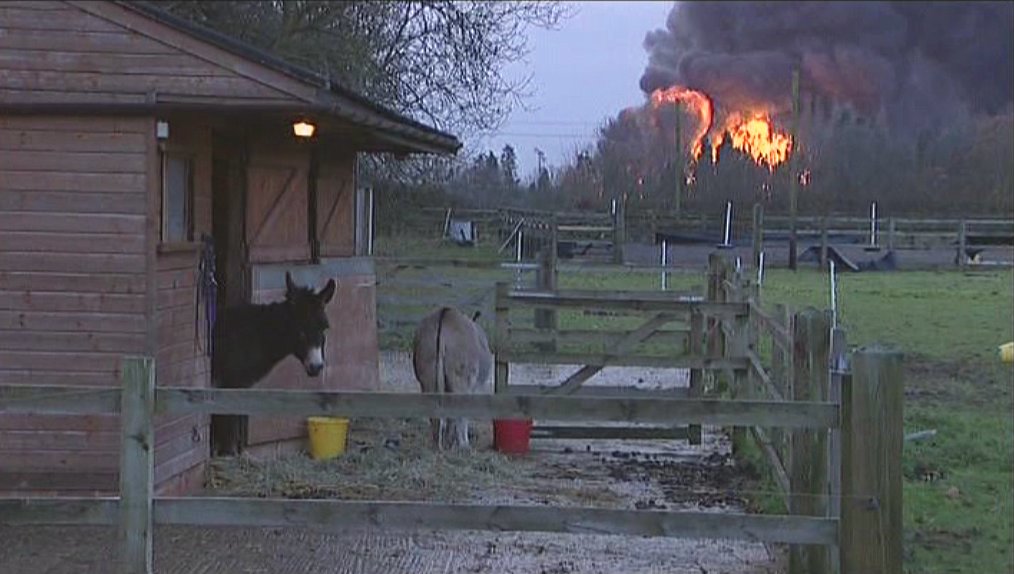
For a normal TV, it is not possible to see the advantage of this, even
when a sat receiver allows the reception and decoding, simply because
there are not enough picture elements on the tube. It is possible to
use the ones there are inelligently, so the one channel looks better
than the other, depending on the kind of signal enhancements and the
type of TV.
For a picture like the above, a higher resolution screen is needed, and
the material with more information in it, in this case the picture was
shown on a computer screen (1600x1200 actual pixels in true colour)
with a sat receiver capable of higher resolution, and the screen
bandwidth and decoder speed to keep up with the required pixel update
rate and decoding speed.
Intoxicating? Almost, pretty good, to get hooked on a bit when the
encoder and channel work along, and the de-interlace and motion
compensation c.q. filtering match and are ok for the material. Some
DVDs, which can easily have such resolution and higher, don't have the
naturalness of pictures because the image is optimized dead, or simply
can't be played right on systems which are too slow.
Another example, I think I did no image processing at all, or
intelligent (temporal) de-interlacing, which usually makes a still look
unsharp:

Would the BBC also go bankrupt? Here's an example image from "The Omen":

And one from the also unprocessed sat received film The Tower of Evil:
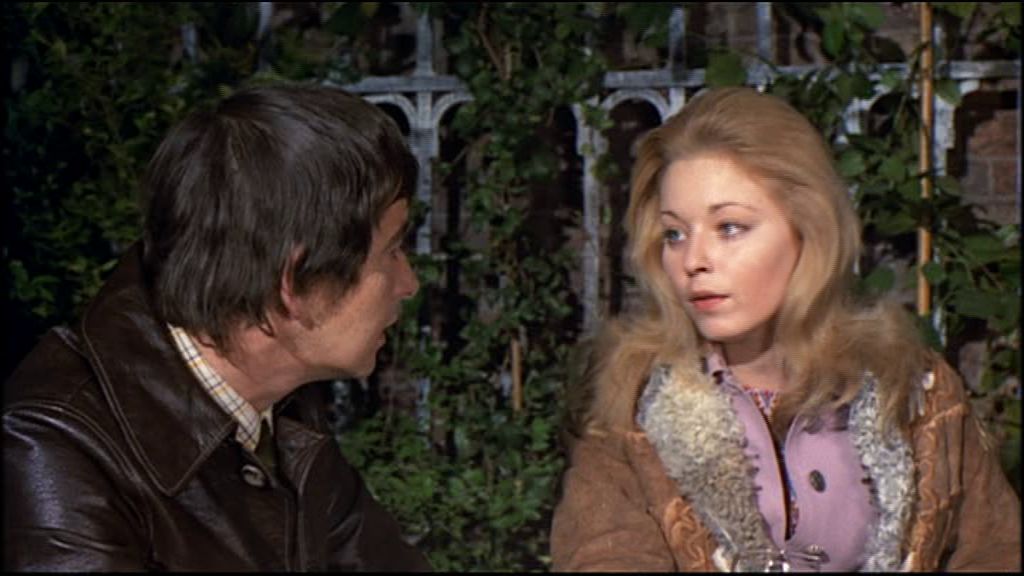
It would be cool to pick up a camera and shoot some material wich can
be broadcast and seen at such quality, and with my type of audio system
connected, and good DA converters. No comparison with the sh* about
'broadscreen' and all kinds of image processing messed up regular tv
qualities anymore, or the milkpackage 'surround' 'experience'...
As a comparison, the highest quality unmessed-with 'normal' broadcast
quality PAL signal on a good TV is like what can be achieved with for
instance the real-time mpeg-2 (6mbit/s) pinnacle box, which I currently
regularly use with dune on linux (Fedore core 4, 64 bit with a Athlon
64), which can be 'improved' my a good player (like mplayer) and some
filtering maybe, but that usually messes things up and gets boring
after a while:
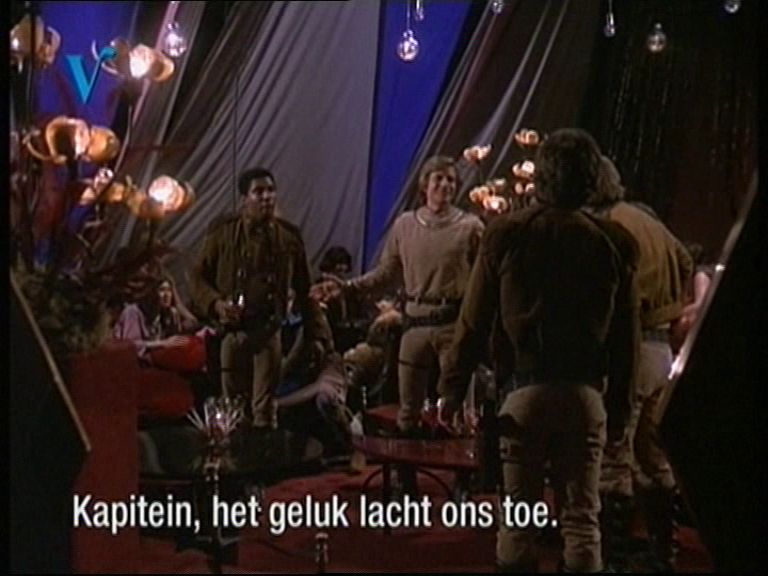
Not bad, but I prefer Higher D!
The sat receiver is in a fast, even 'hip' pc: A Pentium D (930) dual
core at 3 GHz with a 955 chipset, dual banked memory and a NVidia 6700
graphics card and a dual channel TV and sat receiver built in. A view
from the back of the server and sat-receiving PC as I currently can use:

At the left the PC is connected with a small 35 cm sat receiver dish,
which allows 2 channels of simultaneous HD material (from the same
satellite of course) to be viewed and / or recorded, so two at the same
time, fo the above quality.
The Athlon 3.3 server machine allows at least 4 videos to be
seen/played back simulateneously, and the dual core also allows viewing
of at least a few HD channels, but it has a built in pixel-based image
filtering chip which isn't making more than one media player (on the
server I use multiple instances of mplayer which is easy) at same time
very altogether happy, though it is certainly possible to put on a dvd
and the sat and a big play back in winamp (video) and windows media
player and stay under dangerous loads or get memory bandwidth problems.
Even fairly heavy 3D graphics at the same time works.
I didn't know there were sat front ends which could feed to receivers
from a single dish and LNB but this is even quite sensitive enough and
really a tiny (camping!) dish.
Oh the wires are, lets see, everything from a number of battery
chargers for cameras and such to usb for pinnacle, webcam, dsp
devboard, synthesizer, etc, to ethernet (3 x 100 baseT) multiple audio
connections (7.1 possible) and a mixer and such to the not visible self
made audio amp and such and various (long) video connections.
Bezier subdivision in hardware
Well, that sounds like graphics work, and it is: my graduation work at
university was about Bezier surfaces being used in a graphics design
system.
I had read an articlewhich was (aprt of) the basis for my work about a
chip for doing a certain rendering job very fast, and I've now made
that chip sortof to begin with, a bit broader in setup though.
The prototype is shown here:
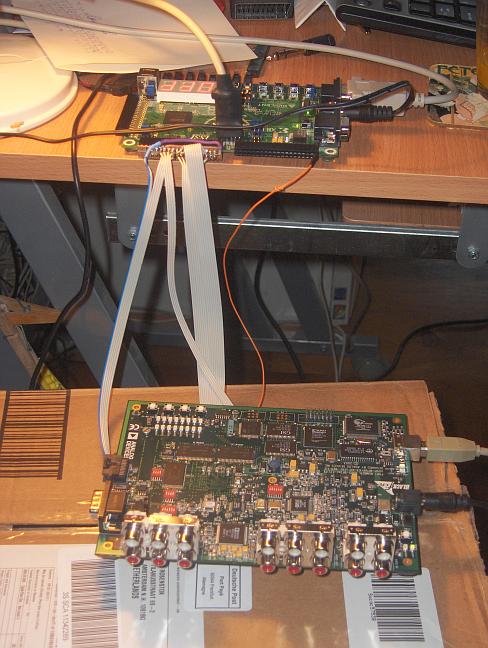
I'll make a page about the subject : http://www.theover.org/Siggraph
where all the programming files for a 4 stage, 3D, 16 bits
subdivision/selection/bounding box chain with >30MByte/Sec DSP bus
connection and DSP communication and compuation test program are made
available in Open Source and Free form, except for commercial purposes,
than I want a piece of the revenues or so, I don't know.
I've done these kinds of things myself, looong ago too, which is good:
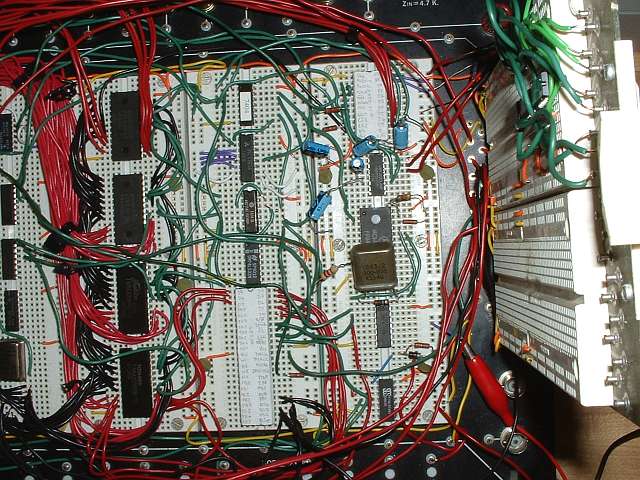
It's called breadboarding, to prototype electronics circuits, in this
case from the wikipedia page on TTL,Transistor
Transistor Logic, which was the first famous and very widely used and
important family of logic chips, used in most computers from the 70
till deep in the 80s and even in the 90s.
The reason to do less of this is that a suitable programmable logic
chip can do the same and is flexible, and probably faster to program on
a professional workstation, though honestly I do some things on a
breadboard a lot faster than remaking the programmer files for a FPGA
on a fast work station...
Disgusting
I saw this some time ago at the god channel and I think it is
digusting, so only intended for research purposes, not for pleasure or
the feeble minded.
It's from a dutch service, see here in
windows media format, about 56
meg in total, it should be streamable real time from the server if you
have moderate dsl, and it starts with a little while of green picture
before normal image appears.
Makes one need to think about what vietnam was about, I recently saw
Full Metal Jacket, and also I read about the nuclear rockets, and saw
short film fragments about all kinds of nuclear experimental blasts
after hiroshima, most a lot stronger than that bomb. There's a job to
be done.
Stardust is
coming to a lab near you?
The 7 year travel over a few million kilometers through space of medium
sized spacecraft ended in a desert in the US, where from the capsule a
sort of icebox has been taken from its extension boom, with in the kind
of ice compartiments a transparent material will be put under a
microscope with a imaging device making probably a million and a half
(IIRC) or so images which will be peered at by tens of thousands of
people through use of the internet in search of 1/100th millimeter
small space particles, gathered during the very fast space flight all
the way past pluto and back.
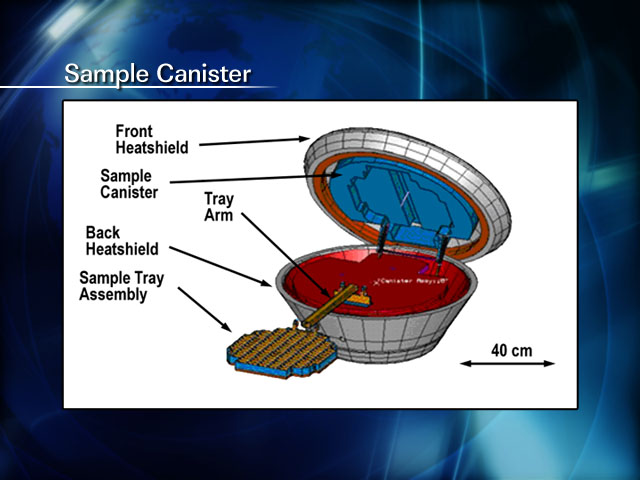
The quite low budget research facility has a webcam,
this is from a week after the capsule had landed back, with only some
damage to a battery during impact maybe:

Probably the first comet particles from space:
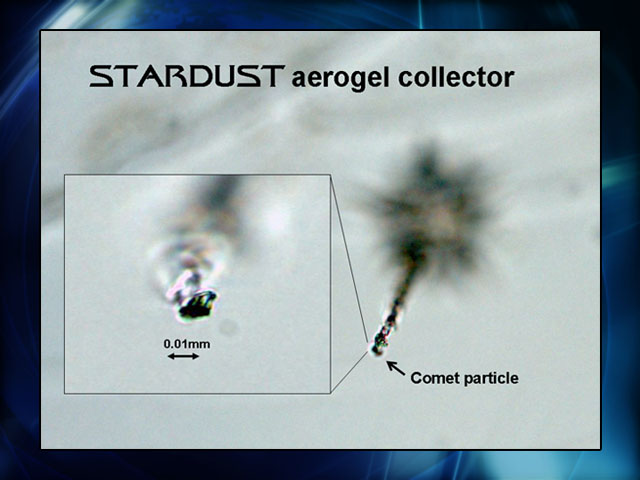
And most probably amoung the first interstellar dust particles ever
seen by man:

Historic! Of course the composition of the particles can tell things
about what's out there, and what possibly has been in the universe long
ago.
The sun also is subject to recent and relevant research:

see the surface of the sun.
Nukes in space?
It appears to be possible to use nuclear
rocket propulsion . In fact the latest Nasa Administrator (in the
National Aeronautics and Space Administration gouvernment organisation
that is the president), Griffin, Talked about it recently.
The reason is a practical, not a theoretical one, one needs a lot of
energy in space, which is hard to bring in another way: a big tank of
gas is very heavy.
There are already nuclear devices in space, apart from actual nuclear
rockets having been designed already in the 60's or so, which are very
small special type of radioactivity based units, for instance powering
the current New
Horizons spacecraft which has recently taken off to Pluto with the
heaviest rocket thus far made by man, with a speed of 40,000 km/h or
so, to power its system for 10 years with a continuous 200 Watts of
power.

Analog Synthesizers and Copyright
In principle, also by law in western countries, the maker of a analog
sound synthesizer design has the intellectual proprty rights of the
creation.
As electronic machines are serviced by service companies or engineers,
schematics are needed, and usually available from the factory.
For somebody without commercial or official business, it would be
possible to use those schematics to build things themselves, or even
for business purposes one could derive or copy a machine.
In fact in the software industry the layout of the fron panel, the
operation of the knobs, and the sounds of the electronics are used very
clearly, even without direct reference to the original, which I find
bad taste. In fact I wonder if it is possible to make a computer
program, call it Noog instead of Moog, and make it sound like an
existing synthesizer, and use it's knob and case layout and sample its
sound.
The sounds could be recorded, I'm sure that's hard to protect, but
sampling music even for seconds has been forbidden in fact. Making of
sounds by setting all the knobs or virtual knobs rigth on a synthesizer
can be protected by copyright, too.
Well, it appears there are service manuals with schematics on the
internet, or one can order them with certain companies, so I had a look
and found for instance the Minimoog schematics, which I find great fun!

I've made the heart of this
filter a few times in electronics, but I didn't have the rest of
the diagram, which left me unsure as to how the circuit was driven in
the original synthesizer I tried to imitate. In fact I even made a
Spice (Circuit simulator) analysis of simulated circuits, and converted
the output to a sound file, with success.
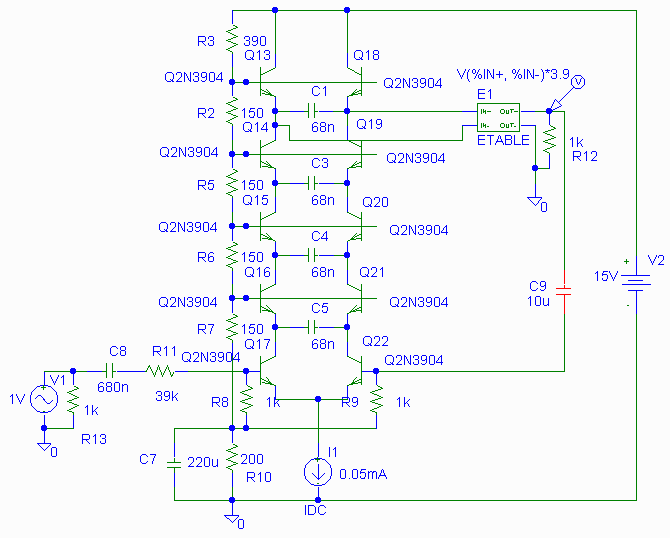
This spice-like simulation I made already long before the synth
simulation companies existed, see here.
The original of another absolutely classic synthesizer, which is
imitated too, from 1978 (!):
